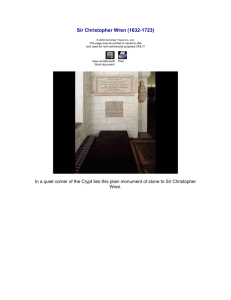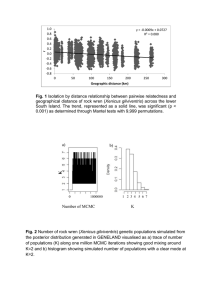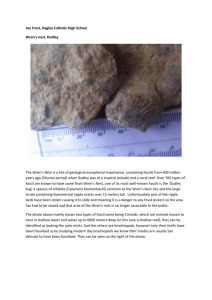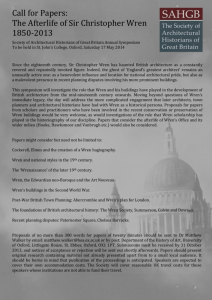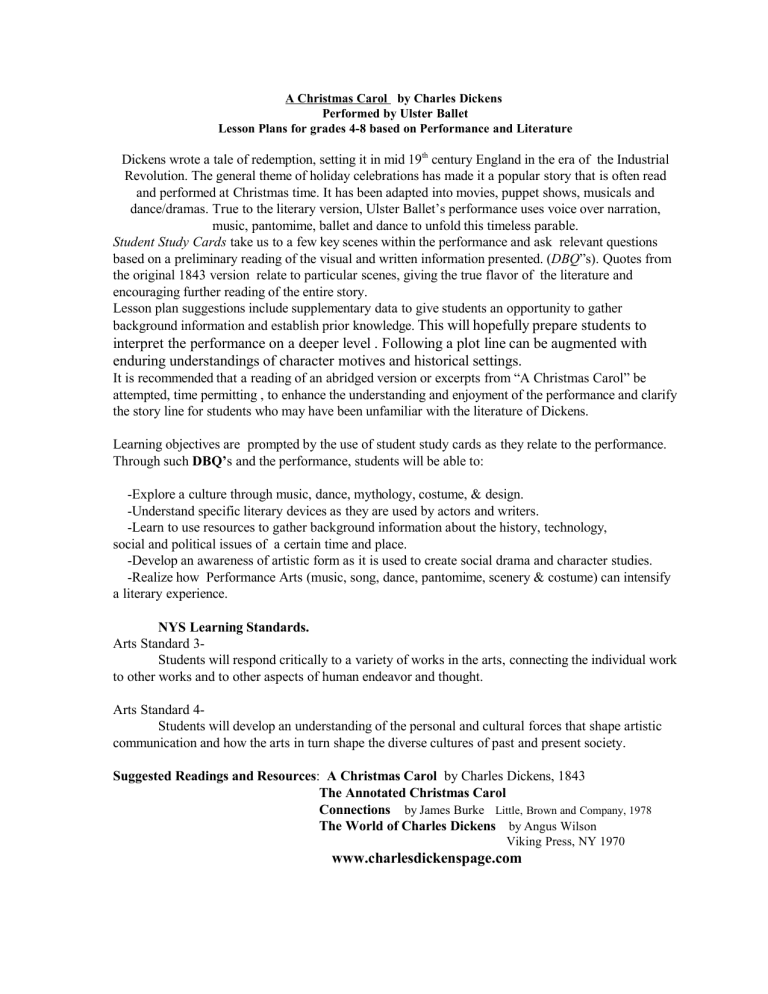
A Christmas Carol by Charles Dickens Performed by Ulster Ballet Lesson Plans for grades 4-8 based on Performance and Literature Dickens wrote a tale of redemption, setting it in mid 19th century England in the era of the Industrial Revolution. The general theme of holiday celebrations has made it a popular story that is often read and performed at Christmas time. It has been adapted into movies, puppet shows, musicals and dance/dramas. True to the literary version, Ulster Ballet’s performance uses voice over narration, music, pantomime, ballet and dance to unfold this timeless parable. Student Study Cards take us to a few key scenes within the performance and ask relevant questions based on a preliminary reading of the visual and written information presented. (DBQ”s). Quotes from the original 1843 version relate to particular scenes, giving the true flavor of the literature and encouraging further reading of the entire story. Lesson plan suggestions include supplementary data to give students an opportunity to gather background information and establish prior knowledge. This will hopefully prepare students to interpret the performance on a deeper level . Following a plot line can be augmented with enduring understandings of character motives and historical settings. It is recommended that a reading of an abridged version or excerpts from “A Christmas Carol” be attempted, time permitting , to enhance the understanding and enjoyment of the performance and clarify the story line for students who may have been unfamiliar with the literature of Dickens. Learning objectives are prompted by the use of student study cards as they relate to the performance. Through such DBQ’s and the performance, students will be able to: -Explore a culture through music, dance, mythology, costume, & design. -Understand specific literary devices as they are used by actors and writers. -Learn to use resources to gather background information about the history, technology, social and political issues of a certain time and place. -Develop an awareness of artistic form as it is used to create social drama and character studies. -Realize how Performance Arts (music, song, dance, pantomime, scenery & costume) can intensify a literary experience. NYS Learning Standards. Arts Standard 3Students will respond critically to a variety of works in the arts, connecting the individual work to other works and to other aspects of human endeavor and thought. Arts Standard 4Students will develop an understanding of the personal and cultural forces that shape artistic communication and how the arts in turn shape the diverse cultures of past and present society. Suggested Readings and Resources: A Christmas Carol by Charles Dickens, 1843 The Annotated Christmas Carol Connections by James Burke Little, Brown and Company, 1978 The World of Charles Dickens by Angus Wilson Viking Press, NY 1970 www.charlesdickenspage.com Street Scene SynopsisA panorama of activities are played out in a mid 19th century London town square and marketplace. Street vendors hawk their wares demonstrating a thriving market economy. Class structures are implied by the rag man and some poorly dressed street children contrasting with the more elegantly dressed families parading by. A lamplighter performs the necessary job of lighting the piped gas street lamp, suggesting that coal gas technology * has brought social progress to urban areas. *For a brief description of coal and power technology consult Connections by James Burke, Little Brown and Company, 1978. (Chapter 7The Long Chain.) Questions about history and economics are prompted by this study card and can be further researched through resource material about the Industrial Revolution; Discussion questions based on Economics, Industry and Technology. What is the source of energy that gives light and power to the city? How does this influence the activities of the population? What kinds of industry are implied by the use of such new technology:? What kinds of natural resources and power make industry possible? How is class structure and wealth demonstrated in the streets of an urban area? What might the domestic situations be like for of each of the classes of people? Why might there be a disparity between the economic classes? The following background information has been adapted and condensed from Connections by James Burke In 1843 London was well lit thanks to furnaces and gas lines that supplied street lamps, houses and factories with an efficient alternative to candle light and a dwindling supply of whale oil. The origin of the need for such technology can be traced back to the 1500’s, the Age of Exploration and ship building industries. The British Navy and global commerce made large scale ship building a necessity yet had also depleted the iron and glass-making industries of the timber resources necessary for the charcoal that fueled their fires. As they looked elsewhere for fuel, coal deposits presented a viable alternative. The rock like coal is mined and transported to the colliery where it is heated and burned into coke, yielding up a similar quality to a wood based charcoal. Iron from ore and glass from silica were successfully extracted and formed into necessary goods. The by-product of the distillation and burning of coal is the coal tar substance which was used for the undercoating of ships as early as 1781.. This pitch, derived from kiln fired coal, condensed into a tarry substance. However, it was later discovered that this yielded another type of energy in the form of vapors. A bit of extra pressure on a firing kiln caused it to accidentally explode, leaking vapors that ignited instantly and burned brightly. Through this accident coal gas industry was born. A patent was applied to this technology by Murdock who’s experiments continued well into 1792. The simple heating of coal in an iron container produced vapors that were collected and piped to designated sites. By 1805 gas lamps were used in factories and mills and by 1812, The Gas Light and Coke Company was established in London. By 1823, 300 miles of gas pipes brought coal gas energy to urban areas. By 1850 there were 2000 miles of gas pipes supplying energy to major British towns. Coal gas lighting was taking over and changing a way of life. Urban community activities and commerce could now take place at night since well lit streets were safer and encouraged greater social interaction. Factories were able to increase their production thanks to a better quality of lighting for longer working hours. Even the literacy rate rose as nighttime education was now possible especially for a working class. One drawback to coal gas technology was waste materials that are the inevitable by-products of the vapor production. Naphtha is a component identified in waste coal tar. Again, an accidental discovery brought in a use for naphtha as a dissolving agent for rubber which was a substance recently discovered in a South American plant. When rubber is sandwiched into cloth, a waterproof fabric is created. The inventor of this cloth, Mr. Macintosh , is easily remembered; the very first raincoats were called a”macintosh”. Still another invention came out of the waste product of coal tar. A young chemist named William Perkins was searching for a substitute compound for the medicinal quinine that was necessary for the treatment of malaria. Instead, he discovered chemical dyes as another derivative product of coal tar. This was the beginning of the chemical industries, and aniline dyes created a brightly colored fashionable wardrobe for the well to do in this progressive society. Marley’s Ghost Scene Synopsis The use of the supernatural creates a imaginary scene and allows a literary device of time shifting to occur within this story. Scrooge’s subconscious or dream state allows the moral message to unfold through out this drama as he examines his past, objectively scrutinizes his present, and projects into his future. The catalyst is the apparition that sets things in motion by holding up three fingers, a promise of the spirits that are to visit later. Marley, burdened by his own past mistakes and flaws, is put into the drama to advise Scrooge about choices that are still possible for him in his present mortal state. Discussion questions about character, morality, ethical issues and consequences can be prompted and considered through this study card. An enduring understanding of choices and consequences may be achieved after students see the performance and accompany Scrooge through his course of redemption. What is the symbolism of the chains that Marley drags about? How does the author use this example of symbolism to help us to learn about the character of Jacob Marley? In time a shifting sequence, Scrooge is able to follow the first spirit back to childhood and youth. How do early experiences influence and shape a character’s development? Who are the people who might be important at this stage of life? The second spirit is an objective observer of the present. If we could step outside of ourselves and realize how our actions effect ourselves and others, do you think this would this help us to make some choices ? Why? How do we prepare or plan for our future if we don’t think of our present? How does a future figure into anyone’s life if it is not connected to the present and past? What are “consequences”? Student Activity Within the vocabulary of literature and art we can use the term Symbolism to represent something abstract with something that is concrete. In artistic usage, an artist may reveal ideas or truths through the use of symbols. Marley’s chains hold the accounting ledgers, symbolizing his obsession with money. We will also meet “Greed” who entices Scrooge with a necklace of gold, symbolizing an obsession with wealth. Choose some qualities, both positive and negative, that are known to be characteristics of people and attach some objects to the “chains” they may carry that symbolize these qualities. Ignorance and Want- Scene Synopsis A gruesome scene is created as Scrooge faces some demons of civilization, allegorized and personified by two unappealing children who represent the qualities of Ignorance and Want. Ignorance can be interpreted in many ways, from lack of education and knowledge to a selective blindness or ignoring of something or someone. Want defines the needs that people and societies have to survive and exist at comfortable levels i.e. food, shelter, clothing, health care, protection, and skills. Public and private charity can help to solve some of these ills as Scrooge is admonished by the spirit. Essential questions can be discussed to define the qualities of Ignorance and Want: What is Ignorance? What does it mean? How is Ignorance personified at this moment in the drama? What makes this character unappealing to us? What is Want? What necessities does it imply that we should have in order to live a decent life? Why are this qualities repugnant to a civilization that considers itself advanced? How do governments and /or ruling classes provide for needs of their population? What role does citizenship and civic responsibility play in meeting the needs of people? How might “charity” help to erase these “demons” form the world? How does “greed “ promote such problems in an economic situation? Student Activity In literature and art, an allegory is used to symbolically express a deeper meaning through a story acted out by human, animal or mythical characters. Describe some characters that might allegorize qualities such as virtue, greed, honesty, generosity, faith, stinginess, hatred, love, etc. In literature, and art, personification is used to represent in human form an abstract quality or notion. It can also be used to describe an inanimate object with attributes of a human or animal . Describe an inanimate object with terms of human or animal characteristics such as fingers, neck, foot, etc. Fezziwig Party-Scene Synopsis A celebration explores the culture of the British Isles through music, dance, song, mythology, fashion, culinary arts and decoration, adding references to old traditions that inspire holiday rituals. In a particular scene performed by the entertaining musicians, we hear the story of St. Stephen’s Day as it invokes the lore of the wren. The wren is a symbolic bird that is hunted by boys of the village and ceremoniously buried after a collection of money or treats is taken. The popular music of the time period was played on folk instruments such as the fiddle, flute or penny whistle and accordion or concertina.. Such music continues to be played today as Celtic traditional music often inspired by Irish heritage. The simple structures and steps of the English .Country Dances were well known by all. Circles or lines of partners formed up to execute each of the variations. Games within the dances were also common. Jigs, Reels and Polkas were the lively dances,* and Minuets would be a more stately, serious dance. In a later party scene at Fred’s Party, a waltz will be introduced. as a more elegant form of dance that emerged in a later time period. Sir Roger de Coverley is mentioned as the popular dance that has evolved into a Colonial American version called The Virginia Reel. The scene takes place in the warehouse of the Fezziwig business, providing lots of space for the exuberant dancing that united all the employees, friends and families of the Fezziwigs. *For a preview of this style of dance watch a DVD version of Pride and Prejudice Universal (2005). It will demonstrate many of these dances, music and the societal function of such gatherings in the early19th century. The dance sequence takes place within the first 20 minutes of the movie. St. Stephen’s Day and the Lore of the Wren The scene we see in the Fezziwig party takes place in the 1820’s in England. We may recognize the some of the rituals of Christmas and Holiday celebrations such as feasting, decorating, dancing and singing. Yet there is another story within this story that tells a tale of long ago, a winter solstice mythology which dates back to Greek & Roman times and early Celtic pagan culture. The three musicians entertain with this tale: The day of the Winter Solstice, December 21, marks the shortest day of the year, thus from that day on the days begin to lengthen. It is then that the Red-Breasted Robin, the honored spirit of the New Year eliminates his predecessor, the Wren, who is the spirit of the Old Year. The Robin sets out with a birch rod to find and banish the Wren who hides in the ivy bush. The Wren is a drab brown bird, and when crested with some tufts of gold, is known as “ the little king”. The Robin with its red feathered breast is thus thought of as murderous and thus stained with blood. Through the ages a folk custom has been carried on in Great Britain around the solstice. The wren is hunted down with birch twigs in the holly and ivy bushes by a group of youths known as “Wren Boys”. Throughout the year a wren is a protected bird, thus it is even considered unlucky to take its eggs. Yet once the bird is killed on St. Stephen’s Day, it is honored with a funeral procession. The Wren Boys take up a collection for the proper burial of the bird. As food and drink were often given as offerings, the follow up to the funeral would be another feast to honor passing of the wren and of the old year. An Ancient Greek myth uses a wheel to symbolize the solstice ritual because the wren is hunted when the wheel of the year has gone full circle. Thus the custom, “on the Twelfth Day to carry about a wren, termed the King, enclosed in a box with glass windows, surmounted by a wheel from which are appended various coloured ribbands” Quoted from Birds, by Swainson, (1885). Such rituals are acted out based on the mythological stories of earlier times when it was important to be in harmony with the cycles of the seasons and with the habits of the families of living creatures. In rural agricultural societies where the planting and harvesting of crops, grazing and hunting of animals lined up with temperature and weather, celebrations would hold importance for the clocking of the seasons. Festivals such as Candlemas, Michelmas, All Hallo’s Eve, Midsummer’s Eve, May Day and Beltane, are related to seasonal changes. The hunting and burial of the wren had been translated into British and Irish lore by tying it in with the celebration of St. Stephen’s Day and Boxer Day, the day after Christmas (December 26) when it was a tradition to give the servants and farm workers a day of celebration. Derived from : The White Goddess by Robert Graves, Chapter 10 The Tree Alphabet 1 - R/Ruis The Golden Bough by James Frazier, Chapter 54-2 Processions with Sacred Animals The words to the wren song as sung by the musicians tell bit of the legend. Compare two versions. The wren oh the wren he’s the king of all birds, On St. Stephen’s day he got caught in the furze So it’s up with the kettle and down with the pan Won’t you give me a penny to bury the wren. The wren, the wren, the King of all birds On St. Stephen’s day was caught in the furze Although he was little, his honor was great. Jump up me lads and give us a treat. Oh it’s Christmas time that’s why we’re here, Please be good enough to give us an ear For we’ll sing and we’ll dance if you give us a chance, And we won’t be coming back for another whole year. As I was going to Killenaule, I met a wren upon the wall. Up with me wattle, I knocked him down. And dragged him into Carrick-town. We’ll play Kerry Polkas, the’re really hot stuff We’ll play the Mason’s Apron and the Pinch of Snuff, Mahoney’s Jig and the Donegal Reel, Music made to put a spring in your heel. Drolinn, Drolinn, where’s your nest? ‘Tis in the tree I love the best ‘Tis in the tree, the holly tree Where all the boys do follow me. If there’s a drink in the house may it make itself known, Before I sing a song called “the Banks of the Lowne”, And I’ll drink with you with occasion in it, For my poor dry throat and I’ll sing like a linnet. I followed the wren three miles or more, At six o’clock in the morning. So it’s up with the kettle and down with the pan, And give us a penny to bury the wren. Oh please give us something for the little birds wake, A big lump of pudding or some Christmas cake, A fist full of goose or a hot cup o’ tea, And then we’ll soon be going on our way. I have a little box under me arm, A penny or tuppence will do it no harm. Mrs. Clancy’s a very good woman, She’ll give us a penny to bury the wren. *Drolinn- Celtic word for wren Fezziwig Party and Musicians - Student Activities Questions and background information encourage an awareness of the music and traditions that form many of our cultural rituals . Parties, Dances, Games, Festivals are all social events that are enriched by understandings of their origins and the mythologies connected to them. Compare several versions of “The Wren Song”. Look for similarities and differences. What is the folk ritual behind this tale? How does the origin of St. Stephen’s Day relate to the wren? The giving of alms or treats is a part of a celebration for many of our holidays (Halloween, Hanukah , Christmas, Valentines Day, Easter). Think about gift giving and the reasons behind such rituals. The popular carol “Deck the Halls” uses archaic language to describe holiday rituals still enacted today . What are these rituals concerning dress, decoration and song? How does the musical structure of Jigs and Reels prompt movement and dances? Compare a Polka and a Waltz. What beat or rhythm is heard in either? Listen to some recordings of Celtic traditional instrumental music by groups such as The Cheftians. Learn to recognize the sounds and rhythms of this style of music. Listen to recordings of traditional British ballads such as “Barbara Allen”. What is the story that is told through this song?
